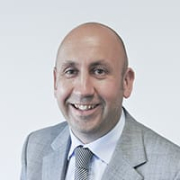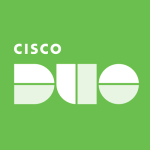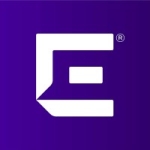What is our primary use case?
Cisco ISE is our network access control solution. We use it to prevent unwanted devices from connecting to our physical network. We also use it for wireless access control on the corporate network, but not on our guest internet network. That difference is because we have Cisco Meraki on the guest wireless.
The solution is in twin private data centers and we did virtual servers, not physical appliances. They're on our VMware platform.
Our business is the lending half of banking only. There are no ATMs or customers coming in with deposits or credit cards. It's a commercial lending operation. We don't have a lot of foot traffic into our locations from our customers. Some might say we're a little overly worried about our physical network, because we're pretty physically secure already. However, we occasionally do customer appreciation events in our locations, at which point there could be 100 people waltzing in and out of any one of our buildings. That's when the regulators say, "That's why you need security." Ultimately, if you let your guard down in the world of security, you're going to get attacked. So, like it or not, we have to button it up.
How has it helped my organization?
Cisco ISE definitely helped us pass the audit requirements we had. We're a type of federally chartered organization and we have a special regulator in the federal space. The need for network access control was born out of audit and penetration test findings. ISE is auditable and we send logs up to our SIEM for analysis.
The solution has also improved our trust situation. It's one of the many pieces that we needed to be buttoned up tight.
What is most valuable?
It does what it's supposed to. We use a certificate-based authentication method for corporate-managed devices. That means when a user walks in with their managed laptop and plugs it into the network, it chats with Cisco ISE in the background, allows it on the network, and away they go.
And when it comes to establishing trust for every access request, no matter where it comes from, it's effective. That's like a "pass/fail" and it passes.
Our environment is a distributed network, across many locations. Cisco ISE runs in a pair of data centers for us: to each client, a primary and a secondary. The database keeps itself synchronized between the two data centers so if one data center is down, we can swing to the other for continuous service. It does its job.
What needs improvement?
A main issue is that the upgrade process, over time, is extraordinarily fragile. Repeatedly, over the past several years, when we've tried to upgrade our Cisco ISE implementation, the upgrade has broken it. Ultimately, we have then had to rebuild it because we need it. There are so many updates and, often, you can't go to a particular update unless you've done all of the updates leading up to it, although I don't think that was our issue.
If they could improve the upgrade process, that would make me sleep a lot better. It's almost like we need to have it pre-qualified before applying an update because our whole world hangs off of it. It is a "center of the known universe" implementation for us.
It is also an incredibly "nerdy" tool, one that is not really well documented for your everyday network and security engineers. It takes a village of specialists to keep something like this running. Cisco is definitely making some improvements in the user interface. It's a little more understandable and approachable. Even for the nerdiest of nerds, having what I call a "kissable baby face" makes it more usable. Cisco knows this and, from version 3 and up, they've been trying to improve the usability and it's getting better. It could use some work.
Not everything is a smart Windows or Mac OS device. We have Windows 10-based user laptops, almost exclusively, and there are some printers and phones and the like that are capable of either a certificate or other 802.1X conversation with Cisco ISE. From an engineering perspective, we just went "way-simple." We do MAC address bypass or MAB tables, which is administratively challenging.
Finally, I believe we've stretched it beyond its capabilities in attempting to make it a multi-client solution, more like a service provider implementation. It's really not architected for that yet. I think that's on the roadmap. This is what I refer to as a monolithic implementation. It is capable of servicing multiple Active Directories and saying, "I recognize this address range equals client X, and this address range equals client Y," and it can interrogate the appropriate Active Directory. But the way that we've implemented that, honestly, is a hack job. It's fully supported, but it's just not multi-client architected. If I had one message for Cisco, it would be: Please make this thing multi-client, or at least more affordable to do separate implementations that somehow get closer together. That's ultimately what multi-client is.
All our various clients are collectively involved with one another. Each of the five owners owns an equal share of the company and all profit and loss flows to each of the owners equitably. It's not that we don't have procurement relationships with one another. However, our regulator continues to believe that separating things is better. That way, if one of you gets taken down, the others aren't affected. Anytime that you have a product that is a type of monolithic implementation, it potentially could affect all of us.
For how long have I used the solution?
For about six and a half years I worked for a cooperatively-owned service bureau, which is where I got the Cisco ISE experience on the service provider side. Now I'm on the customer side or the business side of how these technologies affect our environment, and how hard or how easy they are to integrate.
We've had Cisco ISE in production for about four years now. It was a three-year ramp getting it into production.
What do I think about the stability of the solution?
It works like a champ until you try to upgrade it, and then it becomes risky and fragile. I don't know whether that is because of the complexity of the architecture. We have what I would call a twin database environment. Where we're trying to keep two copies, at a great distance from one another, synchronized. One misstep and there it goes.
What do I think about the scalability of the solution?
It is certainly scalable enough in our environment. We have between 3,000 and 4,000 managed nodes, not counting all of the extra stuff including every type of IOT thing you can imagine: printers, cameras, sensors, a security system. It also doesn't include phones, and we have a phone on every desk, whether there's a user there or not.
When you initially think you've only got, say, 3,000 or 3,500 users, how do you get 15,000 devices on your network? But that's the sad reality these days. Everything is on the network. Every employee typically has three devices on the network at any given time: a phone, a tablet, and a computer. The numbers ratchet up quickly.
The good news is that it's definitely scalable in our environment to handle 25,000 devices spread across between 150 to 200 locations, some of which are very remote.
How are customer service and support?
It is a special class of nerds who know how to work with Cisco ISE, and that's true even inside of Cisco. We have used some third parties, Cisco authorized resellers and solution certified specialists, to deal with this, but that's a last resort. Those are the really expensive people for this because there is such a small community of people who are qualified in this product.
Because it's such a specialized skill, they are not as available as I would like.
How would you rate customer service and support?
Which solution did I use previously and why did I switch?
We did not have a previous solution.
How was the initial setup?
We were nearly a 100 percent Cisco shop at the time that we selected the product. We had a couple of failed implementations when trying to get it installed. That was likely because we didn't hire the right expertise to assist. Everybody understands the components of it, but when you put it all together, it is just very scientifically complicated.
What was our ROI?
In our case, ROI wasn't really a consideration in going with Cisco ISE. It was a regulatory requirement.
What's my experience with pricing, setup cost, and licensing?
It is fairly expensive and that's part of why we have implemented it in the type of "hack" that we did, to service multiple clients. It would be nice if it were less expensive.
Plan your deployment very carefully. Make sure that you really understand the licensing environment. That was a big surprise, not to my team, but to the end customers who were responsible for the budget for it. Everybody thinks "server-centric," and in this particular case, all of those devices that are being protected ultimately have to have appropriate licensing on the system. There was a lot of, "Oh, I didn't realize I had to buy that part." It's not your everyday product and the pricing model wasn't something people were super familiar with to begin with.
Which other solutions did I evaluate?
We've evaluated some other products since implementing this one. This is not your everyday tool.
The one thing that some of Cisco's competitors have done in this particular space, is to take this stuff to the public cloud. As long as you can do that securely, it is helpful. Maybe that would help in our world. I would love to subscribe to this as a service. In other words, we'd prefer that products like this, products that are that complex, be somebody else's problem and just subscribe to the outcome of them. I'd love this solution to be running in Cisco's world where the real expertise is.
What other advice do I have?
People groan when they realize that they're going to have to do troubleshooting on Cisco ISE; even the nerdiest of nerds. But any product in this space would engender the same reaction. Trying to figure out how I prove that you're allowed to be on my network is not everybody's happy place. We all just want to set it and forget it.
The usability and the upgradability over time, for a product that is in such a critical spot, should be better. I'd love to give it a ten because it was the easiest thing in the world to upgrade. It's just not there yet.
Disclosure: My company does not have a business relationship with this vendor other than being a customer.


















